Tiles and mosaics are often the finishing touches in a kitchen or bathroom, but there is a strong argument for making them central to any project as they can be transformative. Director at Ceramique Internationale Peter Vann looks at the key trends in tiling
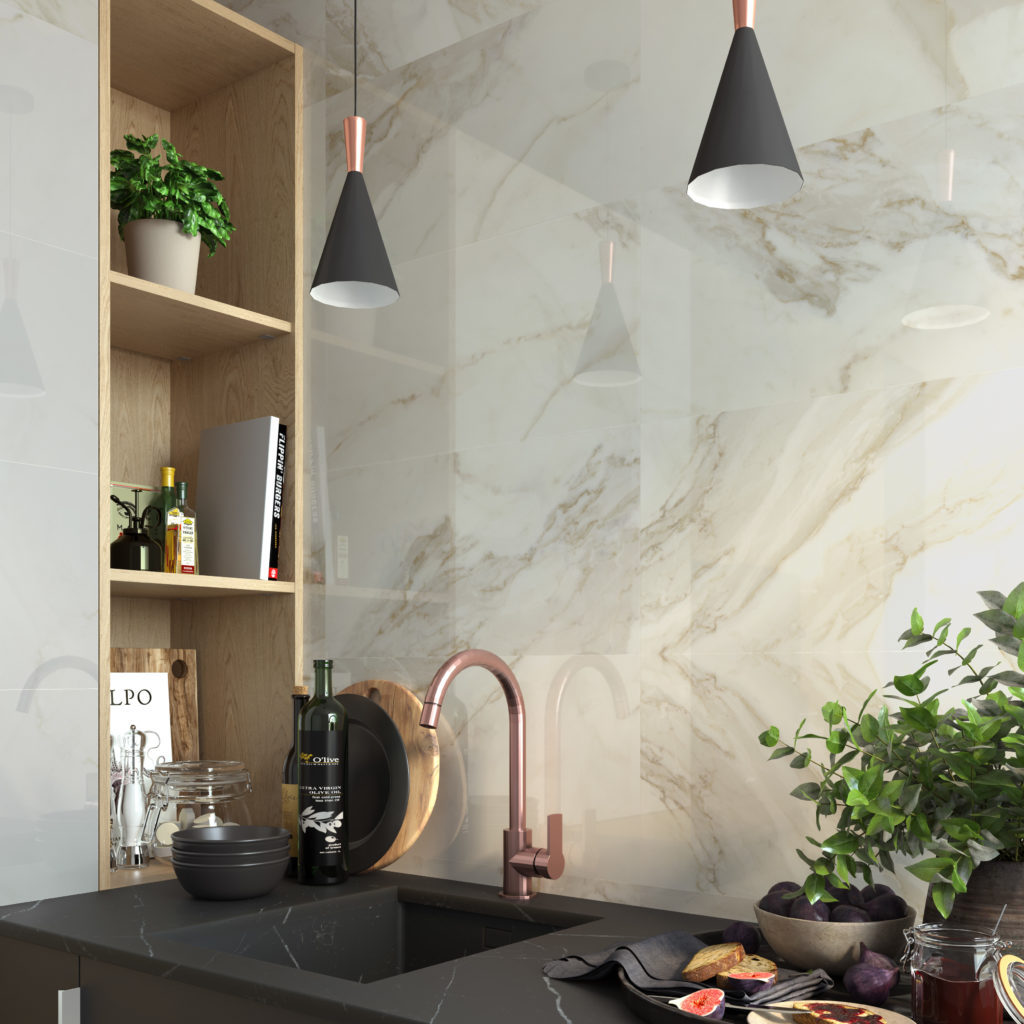
Azteca’s Delta collection of marble-style tiles replicate Italian marble Calacatta Oro. They measure 300 by 600mm and are complemented by floor tiles.
Consumers have changed how they buy tiles and mosaics and are much happier to spend time and energy discovering what is available.
It’s probably 10 to 15 years since they last bought tiles and in a technologically driven market, my, how things have moved on!
Sponsored Video
The popularity of open-plan cooking/dining/living spaces has significantly increased the use of tiled flooring, so for example descriptors such as Urban, Simple, Chic, Rustic, Contemporary, or Classical are where discussions need to start when assembling the decorative components of these spaces.
Wet rooms and larger showering spaces are also commanding a bigger share of attention as places to spend more time to relax.
Wall and floor tiles continue to provide opportunities to make personal decorative statements in these more private areas of our homes.
Extra spice
The two specialist tiling shows, in Italy and Spain, showcase the latest innovations in surface effects, sizes, shapes and formats to provide inspiration.
The last couple of years have actually been more about evolution than revolution, with the reinvention of existing surface effects and trends and the added extra ‘spice’ coming from injections of colour and decoration – all of which just serves to provide even more choice and opportunity to the consumer.
Bigger is better
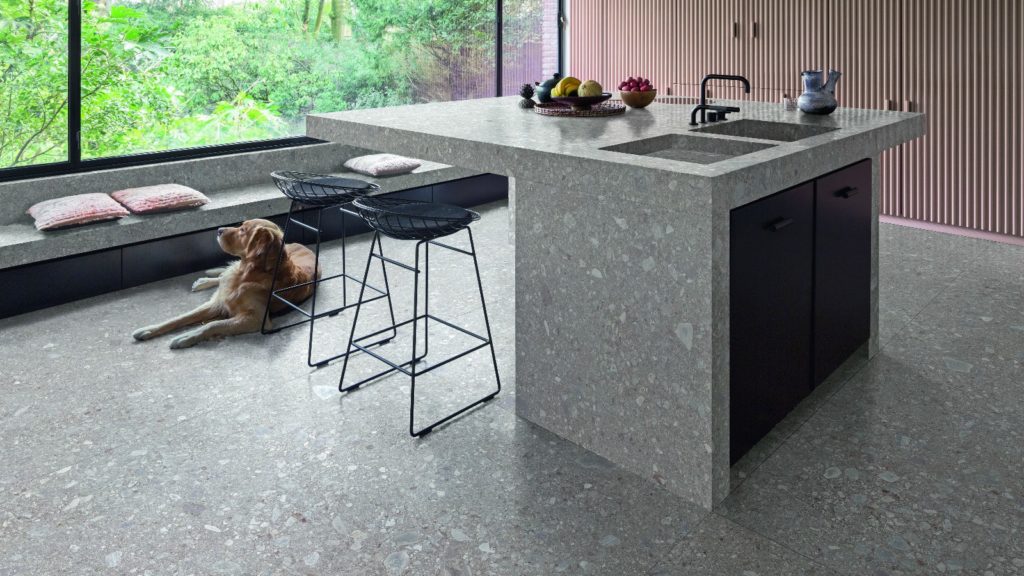
Marazzi’s slab tile -the Grande series – includes 1,600 by 3,200mm slabs in 6mm thickness and 1620 by 3240mm in 12mm thickness
Large format tiles have grown – in both market and physical size – and most recently the huge slab format has been at the forefront.
Marazzi’s slab tile -the Grande series – includes 1,600 by 3,200mm slabs in 6mm thickness and 1620 by 3240mm in 12mm thickness. The thicker products negate the need for a “perfect” flat subfloor required for laying thinner slabs.
Slabs are particularly effective in creating seamless finishes for the ultimate in luxurious finish but also produce an illusion of space.
However, they do require skills and equipment that not all installers currently possess, which can be a limiting factor.
The emergence of the thicker products demonstrates the producers understanding, after a couple of years’ experience, the ‘perfect’ flat subfloor required for laying thinner slabs is elusive, nonetheless they are proving popular in high-end new-build projects.
Natural stones
We are a nation that loves white, and also understands the visual values of marble, and so the re-emergence of glossy white marble for walls and floors has been welcomed.
The three effects that are most popular are Carrera (lots and lots of small grey veins), Statuario (fewer, but larger grey veins) and Calacatta (similar to Statuario but with gold/beige veins).
These classical stone replicas are produced with startling realism, and also often include ‘pattern’ options. Two such are Bookmatch – two tiles which are mirror images of each other and Endmatch, which is a pattern that runs across four tiles.
New takes
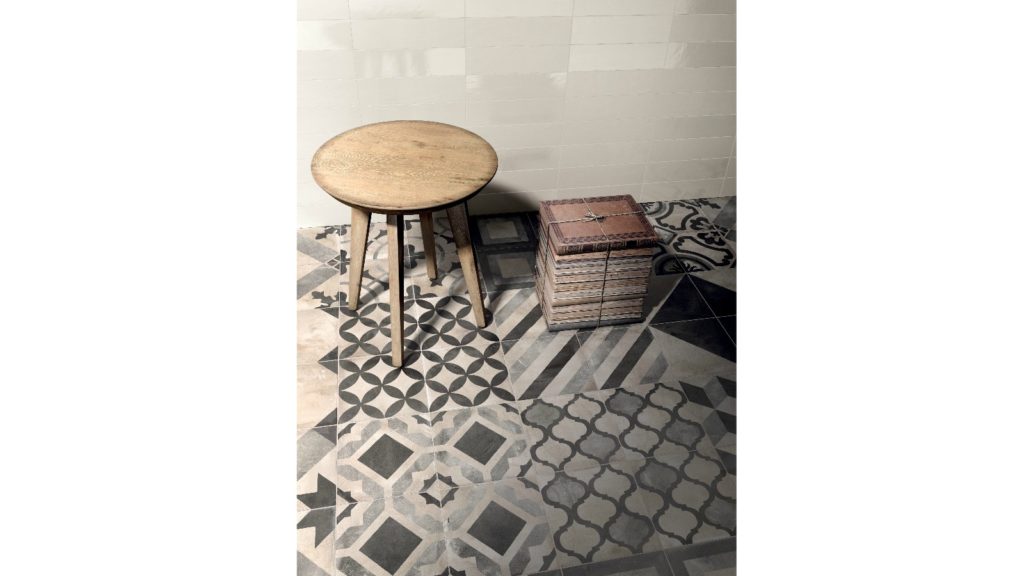
Are Petronio galzed porcelain tiles come in three tones to reflect aged cement. They are available in a 200 x 200mm format
Tiles reflecting contemporary and unassuming surfaces such as cement, plaster, concrete and resin are also increasingly prevalent, and we are seeing lots of new takes on them.
Ceramique Internationale recently introduced Arbitare glazed bathroom tiles, which have been inspired by cement.
Are Petronio glazed porcelain floor and wall tiles come in three tones to reflect aged cement colours. They come in 200 by 200mm format and complement six décor tiles in the range, which can be used in a repeating or random pattern.
However, unless viewed as large tiled areas, these surfaces are sometimes difficult to visually understand. This is because one tile on its own looks pretty much like another – even with digital printing providing unique characteristics to each piece.
Images important
So it is important for retailers to be able to have images – in a brochure or online – of finished rooms to share with consumers so they can see the full effect.
Up to now these surfaces have tended to be most popular in monochromatic grey tones. However, colour is being introduced, including through Casalgrande Padana’s Concrete R-evolution series in shades of blue, green, brown and even pink (yes, pink concrete).
Encaustic-style tiles with their distinctive patterns also remain very popular and in fact an increasing number of factories are offering collections along these lines. It is safe to say that it is not a look that is going away any time soon, whether it is in the worn-looking greys or warmer terracotta finishes.
Combining surfaces
The use of interesting surface effects created by combining different materials is also growing. One strong cross-over look in this sector comes from Richetti.
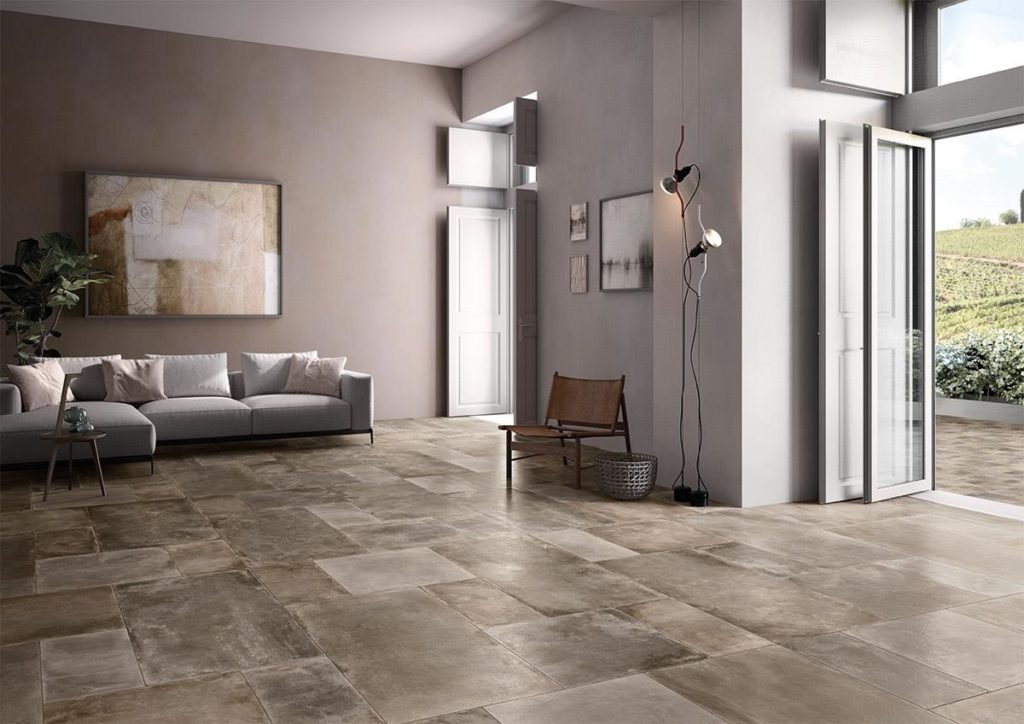
Cocoon floor tiling from Richetti features a cobbled, flagstone look. It can be used indoors or outside
The Cocoon multi-sized series mixes stone and concrete effects together and with digital printing the random nature of every tile.
As well as larger sizes such as 600 by 1200mm, the series includes small 14mm thick rustic-edged, cobble-style tiles as the outdoor version. There are six colours in the series, but each colour includes huge variants creating a fabulous effect.
On the same theme Verde 1999 cleverly manages to combine four material effects – stone, crosscut and vein cut marble, and concrete onto one tile for its Blast series which has four colours, plus mosaics suitable for wet room applications
Not square
The use of different shapes in tiles has also developed alongside technology advances with the most obvious recent example being the chevron.
This ‘oblong’ hits the spot as a natural follow on to the brick shape that is very prevalent. And its shape not only lends itself to a parquet-style floor tile but can be arranged in a side-by-side style as well as the opposing angle layout.
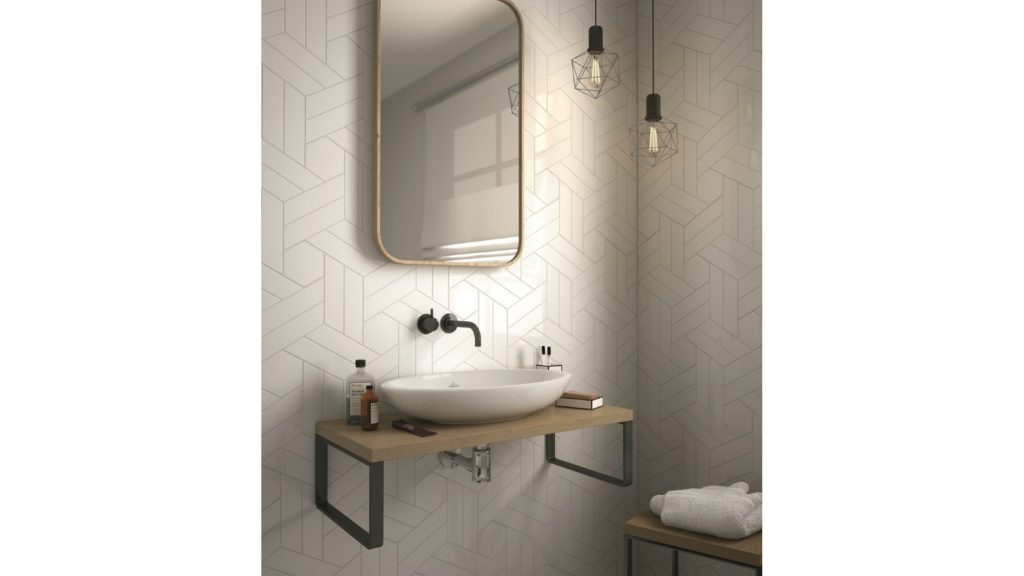
Chevron wall tiles by Equipe can be installed in traditional formats or, as shown here by Equipe, coupled with Scale Hexagon tiles for an alternative layout
But one of the most interesting new shapes we have seen recently is a state-of-the-art range of Rhombus shaped wall and floor tiles from Marca Corona – the original and oldest tile manufacturer which started producing all the way back in 1741.
In essence tiles really can make or break a room and retailers have a huge role to play in talking to consumers, understanding their brief and coming up with impactful options and designs to provide those finishing touches.



